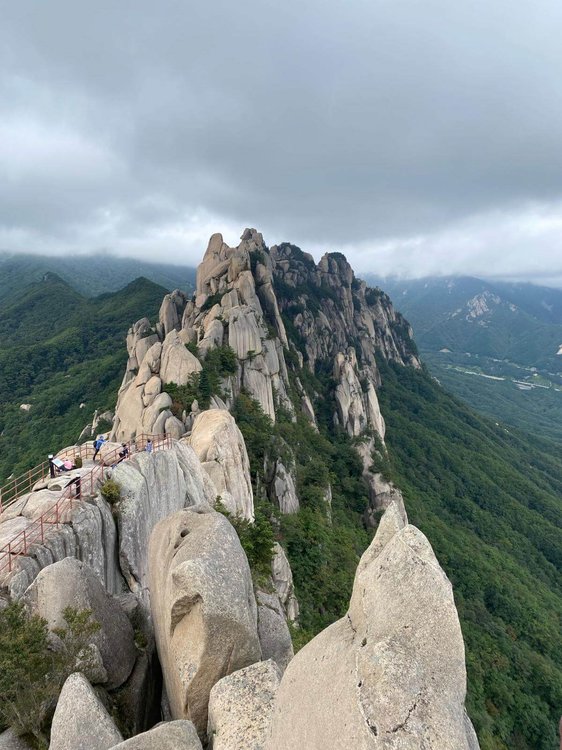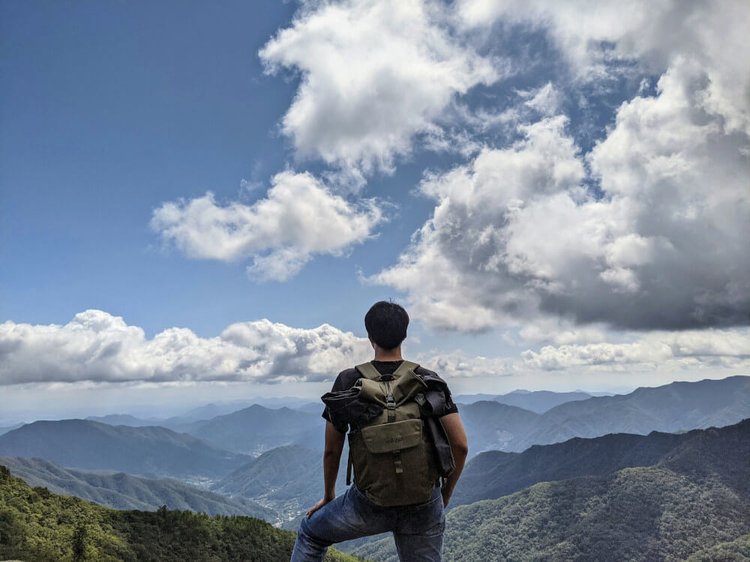South Koreans generally embrace an active lifestyle, with people of all ages prioritizing physical fitness and well-being. Visit any gym in the country, and you'll find a complete demographic representation. If you're lucky, you might even become friends with the Halmeoni (grandmothers).
However, the most popular way for Koreans to stay active is through hiking. Hiking is deeply ingrained in society. Like gyms, mountains are enjoyed by people of all ages. It's not uncommon to see elderly Koreans on mountain trails that Westerners decades younger would not consider. But it's no surprise that hiking is popular, given that the country's landscape is approximately 70% mountains, offering a great escape from the stressful lives in hectic, densely populated cities and a way to connect with nature.
In this post, we'll introduce three of the best parks in South Korea for your enjoyment. Whether you are an experienced hiker or a complete beginner open to an adventure, you should consider one of these parks on your next trip.
Bukhansan National Park - The Most Visited Mountain in Korea
This national park, designated as a World Heritage site by UNESCO, is just 20-30 km north of Seoul. It is the most accessible hike out of the three, as the majority of expats and travelers are located in Seoul. Because of its accessibility, it became the Guinness World Record holder for the most visited national park per unit area.

In Bukhansan National Park at 837m you'll find Baegundae, the highest peak in Seoul, a fortress with a 2,000-year history, and over 100 Buddhist temples and hermitages. It has 13 courses ranging from 1.9 km to 6.5 km, with levels of difficulty ranging from easy to moderate. You can choose to combine two courses for a longer hike. The most popular destination is Baegundae Peak, so be sure to catch that on your first visit.
Seoraksan National Park - The Rock With 6 Peaks
All the way to the northeast of Seoul, you'll find Seoraksan, known for its stunning autumn foliage. It's a bit harder to get there but worth the journey. Definitely consider going here if you've rented a car for a road trip across the country. Seoraksan Mountain has about 30 high peaks, with Daecheongbong Peak being the highest at 1708m, twice as high as Bukhansan National Park. One of the main highlights of Seoraksan is Ulsanbawi rock, which is not on the trail toward Daecheongbong Peak. Ulsanbawi rock, with its 6 peaks, is a must-see on your first visit to the park.

Seoraksan has 14 different courses ranging from 1 km to 23.9 km. Compared to Bukhansan National Park in Seoul, there are many more long trails with a higher difficulty level, yet enough shorter and easy trails for beginners to enjoy. After driving all the way to the northeast of the country and hiking one of the trails, treat yourself to a well-deserved rest at Surfy Beach in Yangyang.
Jirisan National Park - One of the Three Sacred Mountains
Located in the southern part of the country, Jirisan National Park spans three provinces and is home to the second-tallest mountain (Jirisan, 1915m) in South Korea, just behind the highest mountain, Hallasan (1950m), on Jeju Island. With over a 2-hour drive west from Busan, it's not easy to reach for most, but it is highly recommended if you have already hiked a lot in Korea or if you happen to be in the area. (No one happens to be in that area)

Jirisan has 16 courses ranging from 3.1 km to 21.5 km. Like Seoraksan, it offers trails for hikers of every level. A popular destination is the highest and sacred peak Cheonwangbong. Jirisan also houses seven major Buddhist temples, the largest and most famous being Hwaeomsa Temple. Unfortunately, you'll find Hwaeomsa Temple and Cheonwangbong Peak on the same course, both a bit on the longer and more difficult side.
Tips for Hiking in South Korea
Unless you're a huge fan of humidity and mosquitoes, it's probably better to avoid the mountains in summer. The best seasons for hiking are in spring from April to June, and autumn from September to November, when the weather is mild and the scenery is beautiful, with cherry blossoms in spring or beautiful foliage in fall.
For travelers who want an authentic Korean hiking adventure, consider packing hot water, cup ramen, and kimbap. Enjoy these at a scenic spot during a break. Along your journey, you'll likely hear "Paiting!" (Fighting!), a cheer of encouragement. Feel free to join in or start cheering for others. You may also engage in brief conversations, particularly with older hikers (Ajeossi), who ask you where you’re from. Learning basic Korean greetings like "hello" (Annyeonghaseyo) and "thank you" (Gamsahamnida) is appreciated and enhances the experience.
Korea is full of mountains, making it a hiker's paradise for all skill levels. Whether it's your first hike or you're well-experienced, seeking a quick, easy path or a longer adventure, Korea's numerous national parks have you covered. Dive into this aspect of Korean culture and explore what lies beyond the cities. Fighting!





